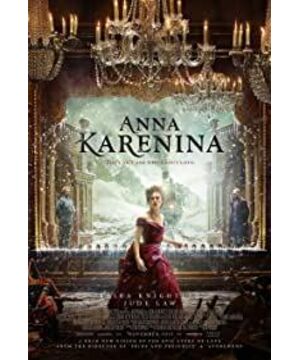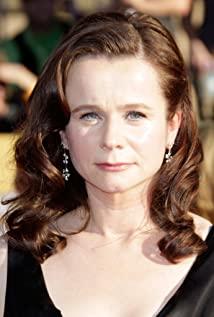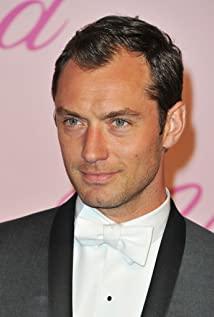Every time I see this sentence, I get a big head, just like seeing "This is the best time and this is the worst time" disgusting. I think what Tolstoy really wants to explain here is the barrel principle. A wooden bucket that can hold a lot of water must be that every board is not too short, and if any board is short, the bucket can't hold much water. In other words, the happiness of a family should be collectively measured by many factors. A happy family must be that every factor is more reliable, so they are similar; and an unfortunate family as long as there is no factor in any one. Reliability will lead to misfortune, so they each have their own misfortunes.
In his "Love in Rome", the great Woody Allen used a bizarre story to illustrate such a bumpy truth: it is unfortunate to be a famous rich man, and it is also unfortunate to be an unknown poor man. , But it’s better to be a famous and rich man. However, Anna Karenina's misfortune is that she is a famous rich man.
I’m thinking about what else is worth writing about the story of extramarital affairs. It’s nothing more than love triumphing over ethics, passion triumphing over reason, enduring the flogging of public opinion and betraying the husband, abandoning the children’s guilt, and betting on all this and the possibility of being Anxiety about human injury. When the movie explores the territory of the subject, the theme of extramarital affairs should be the first to be discarded. However, no. Even the story of "My girlfriend robbed her husband" has been repeatedly shown on the screen in China, from "Thirty-Three Days of Broken Relationship" to "Double Exposure" by Teacher Li Yu.
Tolstoy wrote a real story about extramarital affairs. One hundred years later, some people put it on the screen (and it was the thirteenth time), and some people paid for tickets to see it because of us. This era has changed and everything is tilted towards the common people. The privileges of the nobility are shared by ordinary people, and the misfortunes of the famous rich are shared by the unknown poor. You will only find out when you look back a hundred years later, written by Tolstoy. It is everyone's extramarital affair, and he wrote the extramarital affair to the extreme. People after more than a hundred years don't need to add anything to him.
Because Anna Karenina is a modern person, she is the same as the one hundred years after her, but different from the one hundred years before her. Levin, who is a mirror image, is an ancient person. From the perspective of love, Anna believes that love is the most important thing, as long as it is love, it is beautiful; while Levin believes that beauty is the most important thing, and unpleasant love is not love. In ancient times, we called the latter idealism, and in modern times, we called the former idealism.
Levin’s so-called beauty is certainly the beauty taught by the Bible, but the Bible has never had an effect on its own, so his beauty is the beauty defined by secular prejudice. For example, it is not good for a very old person to fall in love with a very young person; it is not good for a very ugly person to fall in love with a very beautiful person; it is not good for a married woman to fall in love with a very beautiful person; His life is not good. And modern people think they are beautiful at least aesthetically. The distinction between modern and ancient times is that modern people think that love is related to the person involved, and ancient people think that love is related to the aesthetics of a community.
Therefore, Anna is a person who appeared in the gap between the old and the new era. She was conceived in the mother of the old world. The pain she endured was the pain of childbirth.
The most famous monster born in the Industrial Revolution, the train, is like a chainsaw, constantly rubbing and neighing on the cracks of the old and new worlds, accelerating their division. At the same time, train accidents and lying on rails have also become our new world. An event that keeps repeating. The close-up of the rolling train wheels in "Anna Karenina" not only serves as a transition, it also hints at Anna's final destiny. The train connects this story from beginning to end. When Anna and Gao Fushuai met, a person (to use someone’s words like a random entry from "Muholland Road") was cut in half by a train; at the end of the film, Anna jumped into the railroad track to end her love . The train is both the beginning of love (the first love) and the end of love (the last ritual).
From the perspective of love, the film can even become sleepy, and from the perspective of ritual, the film is exquisite. Especially the unconstrained scene scheduling, which integrates the performance, positioning, setting, and even scene switching of the stage play into the long shot of the movie, which has a unique sense of dislocation. It is using an expressionist mentality to make you play, reminding you that people in reality and things in reality are not like this, but people and things in the human mind are like this. Because literature is essentially hypocritical, fussy, and higher than reality, while film is essentially a copy of reality. As a film adapted from a civilized masterpiece, and it is the thirteenth adaptation (so it must not be immortal), instead of working hard on the script and performance, it is better to work hard on the language of the lens. If a film adapted from a novel can make people feel that it belongs to the movie The beauty of the book (rather than the beauty of literature), then loyalty to the original is not so important. This is also the view that we should hold when viewing "White Deer Plain" in a correct way.
In the second half of the film, as the plot progresses, in order not to make the form too aggressive, it starts to be quite satisfactory. However, since there is really nothing too arresting, the joy brought by scene scheduling alone has disappeared, and it has become a kind of sleepy thing. But we should forgive it. We should forgive everything in this movie except the heroine. Because we must first notice that "Anna Karenina" is an ancient novel. The ancient novel is known for its clear psychological description, and the movie is about vision. Movies should be adapted from works that express the connotation by extension, not those works that let the connotation speak for themselves, because in the film, they can't speak.
At the end of the movie, love has disappeared, and what is left is still two rituals, one is about Levin and the other is about Karenin and Anna's two children. In that romantic place where Anna and Gao Fushuai had an affair, Karenin watched his children play and love each other with Gao Fushuai's children. Karenin said that he had forgiven her, but for her, this forgiveness was a punishment. Because this person is so kind, and a kind person is always the sand in the eyes of others.
I'm thinking about a question. What is the relationship between Karenina and Karenin? According to someone, one may be a female name and the other may be a male name, but it is actually one word. In "The Unbearable Lightness of Life", there is a dog named Karenin, which seems to be a male dog.
That chapter is called "The Smile of Karenin." The dog was dying, dying, and occasionally screamed, and they would be very happy, saying it was Karenin's smile. In the final ceremony of the film, I paid special attention to whether Karenin smiled, and then I recalled the whole film. He seemed to have never smiled.
20121021
View more about Anna Karenina reviews











